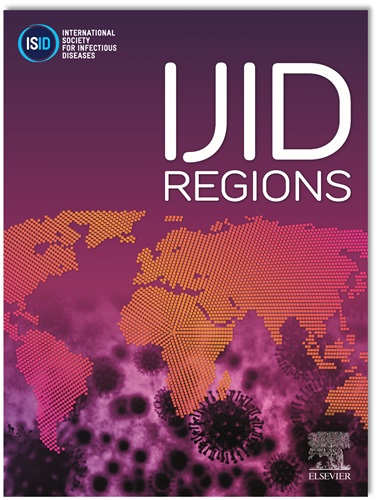Urban pertussis epidemiological patterns in a highly vaccinated megacity: Policy impacts and control strategies in Chongqing, China, 2005-2024
IF 4.3
2区 医学
Q1 INFECTIOUS DISEASES
引用次数: 0
Abstract
Objectives
Despite high vaccination coverage, pertussis resurgence in megacities challenges conventional control strategies. We investigated epidemiological patterns and policy impacts in a densely populated urban setting in Chongqing, China.
Methods
Using population-based surveillance data (2005-2024) from Chongqing (population 32.1 million; DTP3 coverage >97%), we conducted hierarchical Bayesian spatial modeling and age-structured Susceptible-Infected-Recovered-Vaccinated transmission analysis. We assessed four sequential policy transitions and simulated four vaccination strategies over three years (2025-2027) to evaluate their potential impact.
Results
Annual pertussis incidence increased from 0.25 to 70.82/100,000. Infants showed highest absolute risk, while children aged 6-7 years demonstrated elevated risk (RR: 0.55 and 0.54, respectively). Urban areas showed marginally elevated risk (RR: 1.04, 95% CI: 1.00-1.07). Molecular diagnostics implementation revealed substantial hidden transmission (RR: 82.65, 95% CI: 73.47-92.99). Modeling projected extended school-age boosters (ages 5-7 years) would reduce incidence by 47.93%, targeted vaccination of ages 6-7 years achieved 36.64% reduction, and the national benchmark with 6-year booster reduced incidence by 19.09%. All strategies provided substantial indirect protection to infants without direct intervention.
Conclusion
Enhanced molecular surveillance uncovered substantial hidden transmission in urban settings. Strategic school-age targeted vaccination could effectively disrupt urban transmission chains while protecting vulnerable infants.
2005-2024年中国重庆高接种城市百日咳流行病学特征:政策影响与控制策略
目标:尽管疫苗接种率很高,但大城市百日咳的死灰复燃对传统控制策略构成挑战。我们调查了中国重庆人口稠密城市环境中的流行病学模式和政策影响。方法:利用重庆市2005-2024年人口监测数据(人口3210万;我们进行了分层贝叶斯空间建模和年龄结构的SIRV传播分析。我们评估了四种连续的政策转变,并模拟了三年内(2025-2027)的四种疫苗接种策略,以评估其潜在影响。结果:年百日咳发病率由0.25 /10万上升至70.82/10万。婴儿的绝对风险最高,而6-7岁儿童的风险升高(RR分别为0.55和0.54)。城市地区的风险略高(RR: 1.04, 95%CI: 1.00-1.07)。分子诊断的实施显示了大量的隐性传播(RR: 82.65, 95%CI: 73.47 ~ 92.99)。模型预测,延长学龄加强疫苗(5-7岁)将使发病率降低47.93%,6-7岁的针对性疫苗接种将使发病率降低36.64%,6年加强疫苗的国家基准将使发病率降低19.09%。所有的策略都在没有直接干预的情况下为婴儿提供了实质性的间接保护。结论:加强分子监测发现了城市环境中大量隐藏的传播。有针对性的战略性学龄儿童疫苗接种可以有效地破坏城市传播链,同时保护脆弱的婴儿。
本文章由计算机程序翻译,如有差异,请以英文原文为准。
求助全文
约1分钟内获得全文
求助全文
来源期刊
CiteScore
18.90
自引率
2.40%
发文量
1020
审稿时长
30 days
期刊介绍:
International Journal of Infectious Diseases (IJID)
Publisher: International Society for Infectious Diseases
Publication Frequency: Monthly
Type: Peer-reviewed, Open Access
Scope:
Publishes original clinical and laboratory-based research.
Reports clinical trials, reviews, and some case reports.
Focuses on epidemiology, clinical diagnosis, treatment, and control of infectious diseases.
Emphasizes diseases common in under-resourced countries.

 求助内容:
求助内容: 应助结果提醒方式:
应助结果提醒方式:


